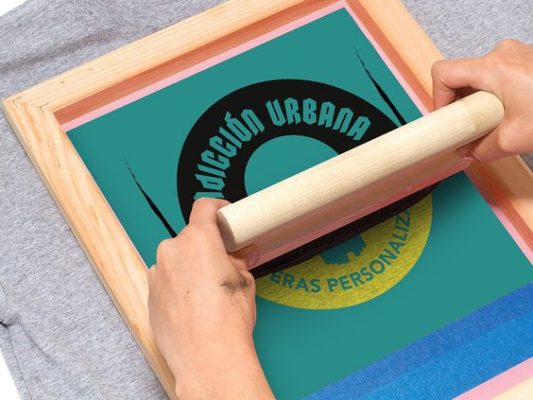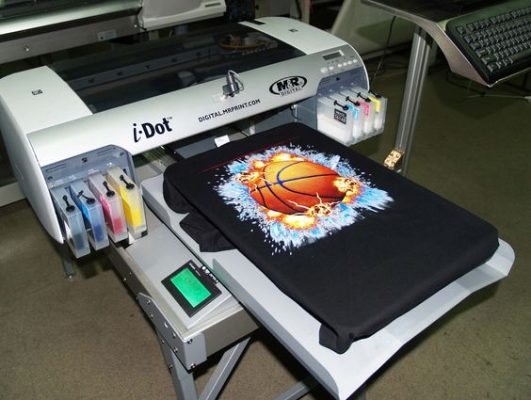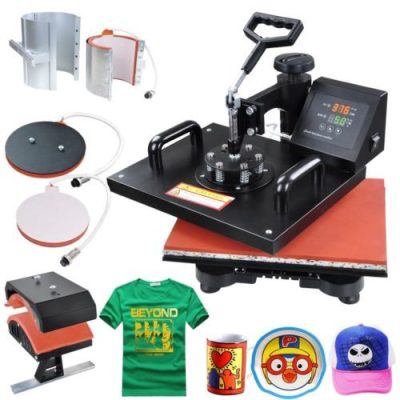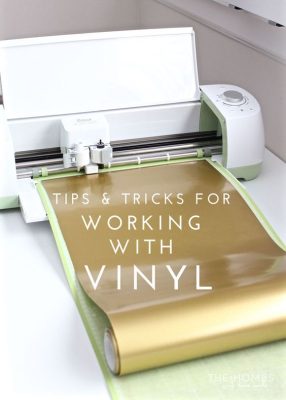Choosing the Perfect Printing Method for Your Custom T-Shirts
Creating custom T-shirts that capture attention and reflect your unique style requires selecting the right printing method. In this article, we’ll break down popular printing methods, helping you choose the perfect one for your needs.
1 Screen Printing: When it comes to quality and durability, screen printing is a go-to choice. It delivers vibrant colors and sharp details, making it a hit for bulk orders and event merchandise. Whether it’s your company logo or a bold statement design, screen printing ensures lasting impressions.
Advantages of Screen Printing:
- Vibrant Colors and Durability: Screen printing produces vibrant and bold colors that stand out on fabrics. The ink used in screen printing is thicker and provides a more pronounced appearance, making the design last longer through washes and wear.
- Ideal for Large Orders: Screen printing is highly efficient for large quantities of garments.
- Opaque Colors on Dark Fabrics: Screen printing allows for opaque colors on dark fabrics, ensuring that the design remains visible and vibrant even on black or other dark-colored shirts.
Disadvantages of Screen Printing:
- Setup Costs: This setup cost can be relatively high, making it less cost-effective for small orders.
- Not Ideal for Photographic Prints: While screen printing can handle detailed designs, it may not reproduce photographic images as accurately as methods like direct-to-garment (DTG) printing.
- Ink Consistency: Achieving consistent ink coverage can be challenging, especially on textured or uneven fabrics. This can lead to variations in print quality.
- Not Eco-Friendly: The process of screen printing can involve the use of chemicals and inks that may not be environmentally friendly.
2 Direct-to-Garment (DTG) Printing: This method brings digital images to life with impeccable accuracy and rich colors. From personalized gifts to small-batch creations, DTG caters to your artistic cravings.
Advantages of Direct-to-Garment (DTG) Printing:
- High-Quality Prints: DTG printing offers exceptional print quality, especially for designs with intricate details, gradients, and photographic images. It can capture subtle nuances that other printing methods might struggle with.
- Full-Color Range: DTG printing can reproduce a wide range of colors accurately, including subtle color variations and gradients.
- No Color Limitations: Unlike screen printing, DTG doesn’t require separate screens for each color.
- Ideal for Small Orders: DTG printing is cost-effective for small batches or even single garments. There are no setup costs associated with creating screens.
- Soft Feel: The ink used in DTG printing is water-based, which results in a soft and comfortable feel on the fabric. This is particularly appreciated for fashion-forward and retail-quality garments.
- Detailed Reproduction: DTG printing can reproduce fine details, intricate lines, and even subtle textures with high accuracy.
- Eco-Friendly Option: Water-based inks used in DTG printing are more environmentally friendly compared to some other printing methods that use solvent-based inks.
Disadvantages of Direct-to-Garment (DTG) Printing:
- Limited on Dark Fabrics: DTG printing works best on light-colored or white garments. Printing on dark fabrics can be challenging.
- Printed Feel: While the soft feel is an advantage, it can also be a disadvantage for some designs. The ink in DTG printing sits on the surface of the fabric and may not have the same durability as ink that’s embedded into the fabric, as seen in methods like screen printing.
- Wash Limitations: While DTG prints can withstand multiple washes, they might not be as durable as screen printing on certain fabrics.
- Speed: DTG printing can be slower compared to methods like screen printing, which can affect production timelines for larger orders.
- Fabric Limitations: While DTG printing can work on a variety of fabrics, it may not adhere well to fabrics with certain coatings or textures.
Initial Cost: While DTG is cost-effective for small quantities, the initial investment in a DTG printer can be relatively high, which might not be feasible for individuals or small businesses.
3.Heat Transfer Printing: Want versatility and detail in a compact package? Heat transfer printing is your answer. Designs are printed on transfer paper or vinyl and then heat-pressed onto the fabric. Whether it’s a family reunion or a fashion statement, this method lets your creativity shine.
Advantages of Heat Transfer Printing:
- Color Variety: Heat transfer printing can reproduce a broad spectrum of colors, gradients, and shades, allowing for creative and eye-catching designs.
- Full-Color Printing: Unlike some other methods, heat transfer printing can achieve full-color prints without additional setup costs or limitations.
- Intricate Detail: Heat transfer printing can capture fine details and small text accurately, making it a suitable choice for intricate designs and logos.
Disadvantages of Heat Transfer Printing:
- Durability: Heat transfer prints may not be as durable as some other methods like screen printing, especially when exposed to frequent washing and wear. The transferred design can crack or peel over time.
- Limited Fabric Compatibility: Heat transfer works best on 100% cotton or cotton-blend fabrics. It might not adhere well to certain synthetic fabrics or fabrics with special coatings.
- Visible Borders: Heat transfer prints often have a visible border around the design due to the transfer paper used.
Complex Designs: Heat transfer printing can be challenging for designs with intricate color blends or fine details that need to be accurately reproduced. - Peeling and Cracking: Over time and with repeated washing, heat transfer prints are prone to peeling, cracking, or fading. Proper care instructions are essential to extend the lifespan of the print.
4 Sublimation Printing: Elevate polyester garments with sublimation printing. This technique infuses dye directly into the fabric, resulting in vivid, long-lasting prints. Ideal for sportswear and vibrant designs, sublimation ensures your T-shirts remain a visual delight.
Advantages of Sublimation Printing:
- Vibrant and Durable Prints: Sublimation printing produces vibrant and long-lasting prints that become a permanent part of the fabric. The colors remain vivid even after numerous washes.
- Full-Color Range: Sublimation can achieve a full range of colors, including vibrant shades and gradients.
- No Added Texture: Unlike some other printing methods, sublimation does not add any texture or weight to the fabric, resulting in a smooth and comfortable finish.
- Breathable Fabric: The ink used in sublimation becomes part of the fabric, allowing it to maintain breathability and moisture-wicking properties. This is especially important for sportswear.
- Edge-to-Edge Printing: Sublimation allows for edge-to-edge printing, enabling you to cover the entire garment with your design without visible borders or seams.
Disadvantages of Sublimation Printing:
- Polyester Fabric Requirement: Sublimation printing works best on polyester or polyester-blend fabrics. It will not work on 100% cotton or natural fiber fabrics, limiting the variety of fabric options.
- Light-Colored Fabrics Only: Sublimation inks are translucent, so they work best on light-colored garments.
- Printed Area Limitations: Sublimation printing requires a heat press, which might limit the printable area based on the press’s size.
- Design Distortion: Sublimation printing can lead to minor distortions in the final design due to the heat and pressure applied during the transfer process.
5 Vinyl Cutting: For simple yet impactful designs, vinyl cutting is your ally. Cut out shapes from vinyl sheets and heat-press them onto your shirts. Make your team jerseys pop or celebrate milestones with customized names and numbers.
Advantages of Vinyl Cutting:
- Precise and Clean Designs: Vinyl cutting produces crisp and precise designs with well-defined edges, making it ideal for text, logos, and simple shapes.
- Durability: Vinyl prints are highly durable and can withstand multiple washes and extended use without fading or cracking.
- No Color Limitations: Since vinyl designs are cut from sheets of colored vinyl, there are no limitations on the number of colors you can use in a design.
- Fast Production: Vinyl cutting is a quick process, making it suitable for producing small batches or on-demand orders with short turnaround times.
Disadvantages of Vinyl Cutting:
- Single-Color Limitation: Vinyl cutting is limited to one color per layer.
- Texture and Thickness: Vinyl designs can feel slightly raised and textured on the fabric, which might not be desirable for all types of garments.
- Limited Fabric Compatibility: Vinyl cutting works best on cotton and cotton-blend fabrics. It may not adhere well to stretchy or textured materials.
- Heat-Press Requirement: Vinyl designs require heat pressing to adhere to the fabric. This step can limit the size and shape of the printable area.



